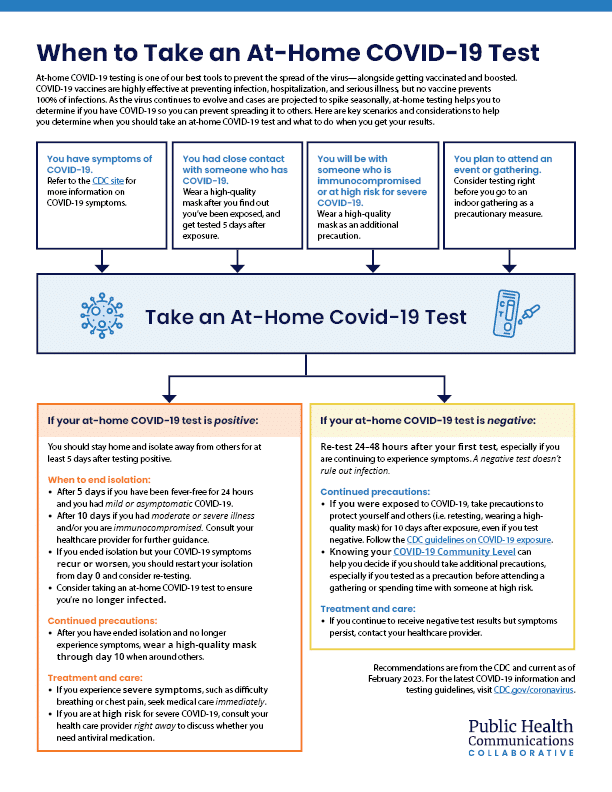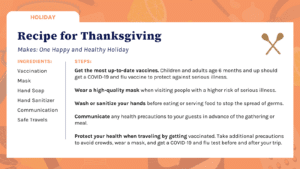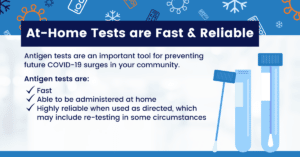At-home, self-administered COVID-19 testing is one of our best tools to prevent the spread of the virus—alongside getting vaccinated. COVID-19 vaccines are effective at preventing infection, hospitalization, and serious illness, but no vaccine prevents 100% of infections. As the virus continues to evolve and cases are projected to spike seasonally, at-home, self-testing helps you to determine if you have COVID-19 so you can prevent spreading it to others.
The Public Health Communications Collaborative has created a new resource outlining key scenarios and considerations for when you should take these kinds of COVID-19 tests. Use this new PHCC resource to help your community determine when they should take a self-test for COVID-19 and what to do when they get their results.
Download all files: PDF on When to Take an At-Home COVID-19 Test (English + Spanish versions) and shareable graphic
PDF: When to Take an At-Home COVID-19 Test
Note: There are unbranded versions of the resource in the zip folder. Organizations may add their logo to the unbranded resource or social graphic in the bottom right corner. You can do this by uploading the PDF to a design program, such as Canva, or by using a PDF editor, such as Acrobat.
Social Media Sample Social Posts
Sample Posts (English)
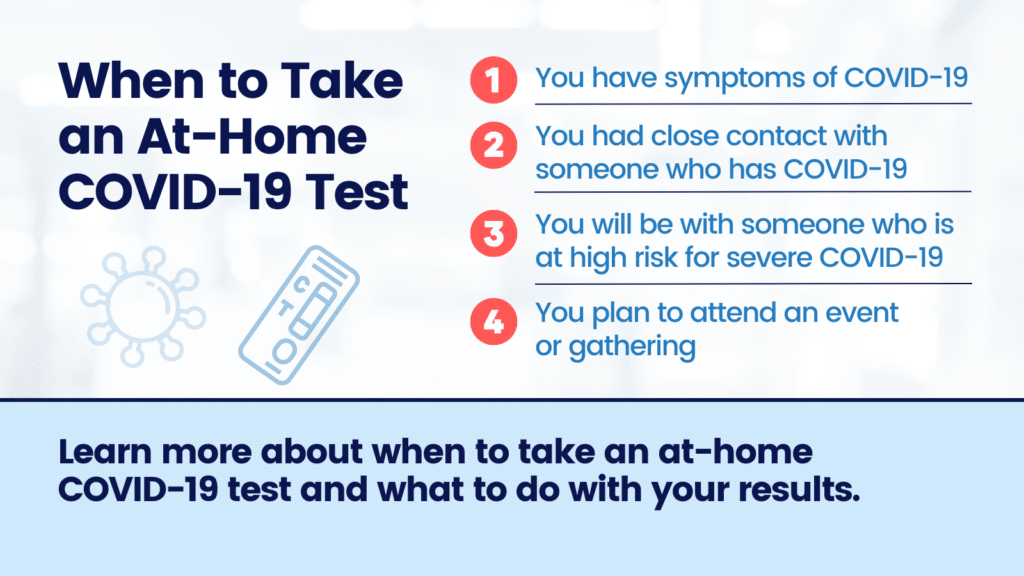
Click to download shareable graphic
- As #COVID-19 continues to evolve, at-home COVID-19 testing remains one of our best tools to prevent the spread of the virus. Here’s the latest on when to take an at-home test and what to do with your results: [insert link to your local/state landing page]
- In addition to getting #vaccinated and wearing a high-quality mask, testing is one of the best tools to prevent the spread of #COVID19. Know when to test + what to do with your results to keep yourself and others safe: [insert link to your local/state landing page]
- Reasons to take an at-home #COVID-19 test in 2023:
- You have symptoms of COVID-19.
- You had close contact with someone with COVID-19.
- You’ll be with someone who is immunocompromised or at high risk for severe COVID-19.
- You plan to attend a gathering.
Learn more: [insert link to your local/state landing page]
- Experiencing #COVID-19 symptoms is only one reason to take an at-home COVID-19 test. Here are other key scenarios and considerations to help you determine when you should take an at-home test and what to do when you get your results: [insert link to your local/state landing page]
Sample Posts (Spanish)
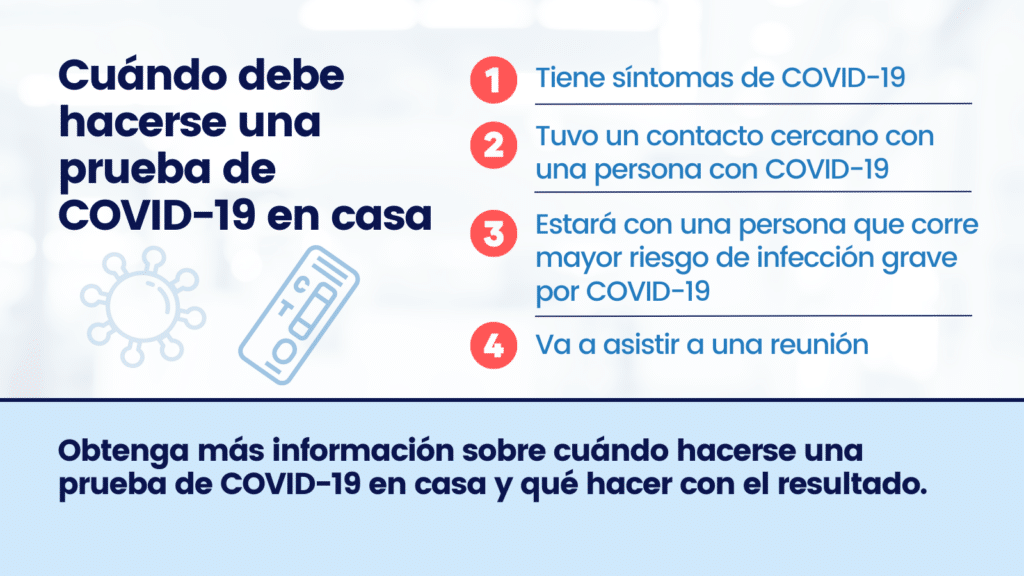
Click to download shareable graphic
- Aunque el #COVID19 sigue evolucionando, las pruebas de COVID-19 en casa siguen siendo una de las mejores herramientas para prevenir la propagación del virus. Vea información actualizada sobre cuándo hacerse una prueba en casa y qué hacer con el resultado: [insert link to your local/state landing page]
- Además de #vacunarse y usar mascarillas, hacerse la prueba es una de las mejores herramientas para prevenir la propagación del #COVID19. Infórmese sobre cuándo hacerse la prueba y qué hacer con el resultado aquí: [insert link to your local/state landing page]
- Razones para hacerse una prueba de #COVID19 en casa en 2023:
-
- Tiene síntomas de COVID-19.
- Tuvo un contacto cercano con una persona con COVID-19.
- Estará con una persona inmunodeprimida o que corre mayor riesgo de infección grave por COVID-19.
- Va a asistir a una reunión.
-
Más información aquí: [insert link to your local/state landing page]
- Tener síntomas de #COVID19 es una de las razones para hacerse una prueba de COVID-19 en casa. Situaciones como las siguientes lo ayudarán a decidir cuándo hacerse una prueba en casa y qué hacer cuando tenga los resultados: [insert link to your local/state landing page]

